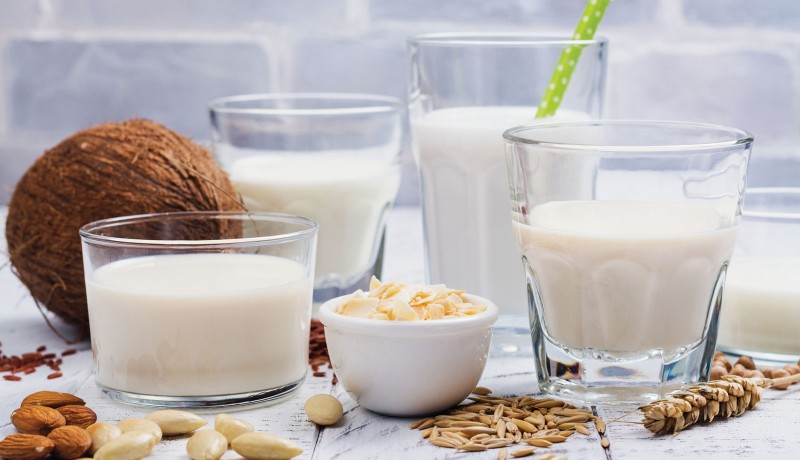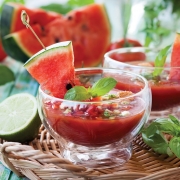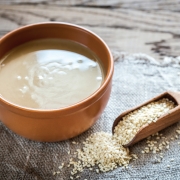
Health

Wellness consultant Naini Setalvad suggests nutritious alternatives for the lactose intolerant
Milk and its products have always been a part of the Indian diet, in some form or another. In fact, in the Indian subcontinent, milk is considered the purest drink, consumed by gods and humans alike!
We have read about milk being rich in protein, certain vitamins, minerals, carbohydrates and essential fats. Mixing milk and its by-products—ghee, butter, buttermilk, yoghurt, paneer, cream and cheese—with grains and vegetables forms the basis of wonderful preparations that delight the palate and provide the mainstay for an all-round healthy diet.
However, many silvers across the world find it difficult to digest milk and its by-products. Surprisingly, large groups are complaining of symptoms such as bloating, intestinal cramps, flatulence, constipation and acidity after consuming milk. Various international and national studies are still figuring out the cause for it.
Scientific evidence suggests that cross-breeding has led to change in the quality of milk from A2 beta-casein milk to A1 beta-casein milk (milk that lacks a form of beta-casein protein). The A2 beta-casein milk from the humped Gir cattle (zebu variety) is better for human consumption. It is highly suitable for mental and physical growth and comfortable to digest with no allergic reactions. On the other hand, A1 beta-casein milk protein cell from high-yielding exotic varieties like Holstein cows lacks antioxidants and could cause heart disease, inflammation, diabetes, autism, schizophrenia and other ailments. Also, the milk molecules are not similar to that of mothers’ milk, so our bodies are unable to digest or tolerate this milk, leading to severe discomfort in the stomach that gives rise to lactose intolerance and ill-health.
What is lactose intolerance?
Lactose intolerance refers to the inability to digest milk sugars called lactose. This inability is the result of an insufficient amount of an enzyme called lactase in the gut, which breaks lactose down so it can be absorbed in the bloodstream. In the earlier stages of life, lactase is naturally produced in the digestive system and, therefore, kids are able to digest milk.
However with increasing age, the lactase enzyme in the body starts decreasing as a result of a genetic programme in the body. The lack of lactase enzyme further causes irritable bowel syndrome (IBS), which affects about 5 per cent of the Indian population, and gastro-oesophageal reflux disease (GERD), which affects an estimated 8-20 per cent of Indians.
Causes and triggers
Genetically modified A1 beta-casein milk protein can react negatively in your body. Lactose intolerance is also triggered by drinking raw milk that lacks good bacteria and is difficult to digest. However, fermented milk or milk products—paneer, yoghurt, kefir (cultured, fermented milk drink), ghee, etc—that contain good bacteria can help digest lactose in the body. The more the ‘live active cultures’ of bacteria in the milk, the better it is. This is one reason why many Indian silvers do not know that they are lactose intolerant—they largely never consume raw milk in huge quantities. And for those who are truly intolerant, no form of dairy products will ever be good to consume.
Lactose intolerance usually presents with a number of symptoms including breathlessness, bloating, flatulence, intestinal cramps, indigestion and dysentery after dairy consumption. In some people, it also causes respiratory problems.
Managing lactose intolerance
First and foremost, switch to A2 beta-casein milk, which is available in major supermarkets. Some brands of beta-casein milk available in the market are Vita Farms, Kesariya Farms and Happy Cow’s Milk.
India’s ancient culinary wisdom says that while consuming milk has its side-effects such as asthma, cold and cough or bloating, it is also rich in nutrients. So you can negate the side-effects by using the ancient Indian medicinal properties of herbs and spices handed down by our ancestors. To start with, add salts, herbs, spices, chai masala and cow’s ghee to your dairy products. You can add various combinations of turmeric (haldi), pipramul (ganthoda), saffron (kesar), basil (tulsi), ginger (adrak), honey and cow’s ghee to your milk. Other ideas include adding chai masala to your tea; natural salts and cumin seeds to your yoghurt; or tempering your buttermilk with cow’s ghee and spices. If you’re eating plain paneer, sprinkle a little chaat masala, lemon juice and spices on top to make it easier to digest. Western countries are now serving turmeric lattes and coffees that are essentially milk with turmeric and cow’s ghee or coconut oil.
Safer alternatives
Supplement your body with probiotics that help increase healthy bacteria and aid digestion. You can try non-dairy alternatives such as coconut milk, soymilk and nut milk. However, soymilk is difficult to digest and best taken in its fermented form. Some alternatives commonly available in the market are Sofit by Hershey’s, Silk almond milk by White Wave Foods, and Soy Milky and Almond Fresh by Life Health Foods. Replace your butter with tahini (sesame seed butter), peanut butter, cashew butter and almond butter. Also, substitute your milk-based yoghurt with coconut milk yoghurt, soy yoghurt or paneer.
All these alternatives are available at grocery stores and supermarkets such as Food Hall, Nature’s Basket and Spencer’s as well as some online health food shops. Though they don’t come cheap, they’re worth having as they are high in calcium and fortified with minerals and vitamins.
You can also make nut milk at home. Choose a nut of your choice: almond, cashew or coconut. Soak a few pieces of the nut in water overnight. The next day, blend the soaked nuts together with water. You can adjust the quantity of water depending on the consistency and taste required and your homemade nut milk is ready! So the next time your doctor tells you that you are lactose intolerant, don’t be disheartened. Use it as an opportunity to expand your horizons and try out a wide variety of nutritious options. And please note, as a silver, if you’re cutting out dairy products from your diet, it’s important to supplement your body with Vitamin B12 and Vitamin D3, especially if you’re a vegetarian.
RECIPES FOR THE LACTOSE INTOLERANT
WATERMELON SOUP
Ingredients
- Watermelon: 250 gm; cubed
- Red chilli powder: 1 tsp
- Garam masala powder: 1 tsp
- Curry leaves: 4-5
- Ghee: ½ tsp
- Salt to taste
Method
Blend the watermelon cubes in a blender to make a juice. Strain it to remove the seeds. Heat the ghee in a wok or kadhai. Sauté the curry leaves with red chilli powder. Add the watermelon juice, garam masala and salt. Let it cook for 5 minutes. Take off the flame and serve hot.
GREEN MUSK MELON MINT SMOOTHIE
Ingredients
- Green musk melon: 10-12; cubes
- Mint leaves: 2 tsp
- Crushed ice: ½ cup
- Lemon to taste
Method
Mix all the ingredients in a blender and serve chilled.
WALNUT MAYONNAISE
Ingredients
- Walnuts: 1 cup
- Peppercorns: 3-4
- Lime juice: 1-2 tbsp
- Garlic: 2 pods; optional
- Date paste: 1 tsp
- Mustard powder: 1 tsp
- Salt to taste
Method
Grind all the above ingredients to a smooth paste. Serve as a dip or salad dressing.
Setalvad is an obesity and lifestyle disease consultant who offers diet counselling at Health for You, a wellness clinic in Mumbai, as well as online. Visit www.nainisetalvad.com for more details or write to contact.us@harmonyindia.org if you have any queries for her
Photos: iStock Featured in Harmony — Celebrate Age Magazine May 2018
you may also like to read
-
Hot tea!
If you enjoy sipping on that steaming hot cup of tea, think twice. New research establishes a link between drinking….
-
Weight and watch
If you have stayed away from lifting weights at the gym, thinking it might not be a good idea for….
-
Toothy truth
Research has established a clear association between cognitive function and tooth loss when cognitive function score was categorised into quintiles…..
-
PRODUCT OF THE MONTH
Automatic Blood Pressure Monitor Measure your blood pressure and pulse rate with no fuss Hypertension, or high blood pressure, could….










